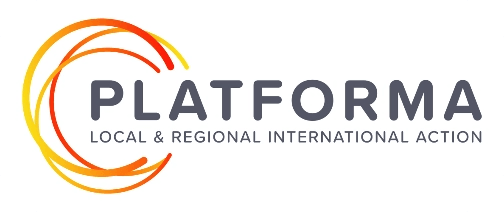This study is based on a joint survey conducted in February by CEMR, PLATFORMA and UCLG[1], which coordinated with all its regional sections to produce a parallel global report on the implementation of the Sustainable Development Goals (SDGs). Its purpose was to collect the most recent information on how and to what extent Local and Regional Government Associations (LRGAs) and networks have been involved in localising the SDGs, both in Europe and among their global peers. These studies have been produced annually and presented at the High-Level Political Forum (HLPF)[2] every year in July since 2016. The HLPF is the central platform for follow-up and review of the 2030 Agenda for Sustainable Development. CEMR and PLATFORMA have been contributing annually to the HLPF since 2017 and the reports to the HLPF from previous years can be found here.
This year’s survey of the European Section includes questions linked to energy to ascertain the aftereffects of the illegal Russian aggression in Ukraine.
Local and regional governments (LRGs) continue to make headway at the subnational level in implementing the UN 2030 Agenda for Sustainable Development and its 17 SDGs, adopted in 2015. The CEMR/PLATFORMA report on this progress will be presented at the next HLPF. The theme of HLPF 2023 is “Accelerating the recovery from the coronavirus disease (COVID-19) and the full implementation of the 2030 Agenda for Sustainable Development at all levels”. This year’s HLPF will also assess to what extent the 2030 Agenda has supported LRGs and their associations in their recovery and development plans. There will be an in-depth review of specific SDGs, including SDG 11 on “making cities and human settlements inclusive, safe, resilient, and sustainable”, a core concern for our members. The latest VNRs from different delegations worldwide will also be submitted at the HLPF, including 10 countries from Europe[3].
HLPF 2023 will also stand out as the year the EU will be presenting its first ever EUVR. CEMR and PLATFORMA welcome this joint review of our associations. This report will complement the individual work done by LRGAs in their own assessments tracking the progress of SDGs. It aims to gather data to assess how we are doing as an Organisation and determine what we can also improve as an association, all which will allow our voice to resonate more at global level. However, given our involvement in assisting the EU to develop its EUVR process, the decision was taken by CEMR/PLATFORMA to not include any redundant questions relating to the EU review in the present analysis of SDG implementation. Both processes, the EUVR on SDGs and the UCLG report on SDGs (for which CEMR/PLATFORMA is producing this report), are being undertaken in parallel and we have taken steps to ensure they are interlinked and complementary.
Within the framework of this study, we received 41 responses to the survey from 29 countries (26 LRGAs from the EU and 15 from non-EU Member States), which have been analysed in this report. A list of nearly 200 examples provided by the responding associations on the implementation of SDGs has also been included (see the examples in the Annex). In addition to associations, individual LRGs have also shared responses that will be incorporated into the UCLG global report on the implementation of SDGs.
[1] This year’s GTF survey set out to determine to what extent the 2030 Agenda has supported LRGs and their associations in their recovery and resilience plans. National associations have been instrumental in bolstering their members’ sustainability efforts, from planning to implementation and even monitoring and reporting. Their role in localising the SDGs is more important than ever as they will be the actors transforming the international framework into reality in Europe and worldwide.
[2] HLPF 2023 will also conduct an in-depth review of SDG6 on clean water/sanitation, SDG7 on affordable/clean energy, SDG9 on industry/innovation/infrastructure, SDG11 on sustainable cities/communities, and SDG17 on partnerships for the goals.
[3] This year, 41 countries will present VNRs, including the following from greater Europe: Belgium, Bosnia and Herzegovina, Croatia, France, Iceland, Ireland, Lithuania, Poland, Portugal, Romania, as well as the European Union with its EUVR.
